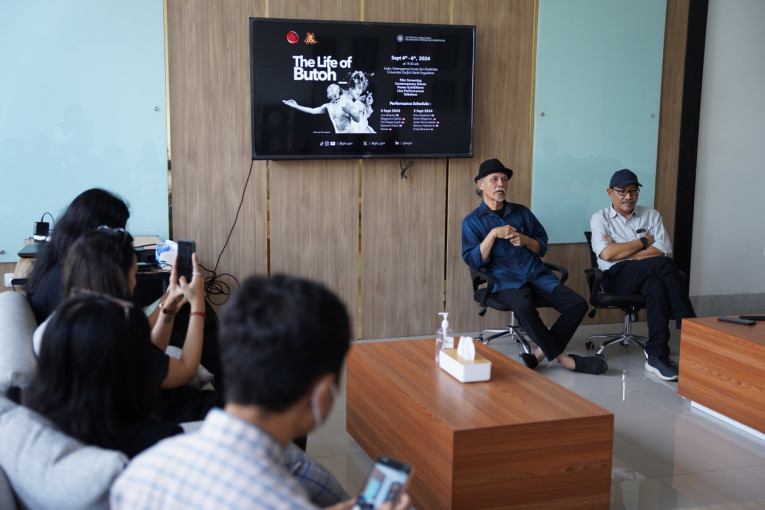
The UGM Innovation and Creativity Hub (GIK UGM) will host an international Butoh event titled “The Life of Butoh” at Joglo GIK UGM from Sep. 4 to 6.
This free event will feature performances by four renowned Japanese artists—Jun Amanto, Mutsumi-Neiro, Rina Takahashi, and Minoru Hideshima—and six senior Indonesian performers: Rianto, Fitri Setyaningsih, Broto Wijayanto, Anter Asmorotedjo, Endy Baroque, and Mugiyono Kasido.
“The Life of Butoh” will include live performances, contemporary dance, Butoh film screenings, a Butoh poster exhibition, and a talk show at each session.
Bambang Paningron, Head of Community & Experience at GIK UGM, explained that Butoh emerged as a form of resistance against Western cultural dominance after World War II, especially after Japan’s defeat in the Greater East Asia War.
Created by Kazuo Ohno and Tatsumi Hijikata in the 1950s alongside the development of avant-garde art in Europe, Butoh introduced a new perspective on performing arts by combining elements of theater, dance, and extreme bodily expression.
“This phenomenon is very intriguing as Butoh continues to transform, evolving with the times and adapting to new ideas and bodies,” he said.
Paningron noted that Kazuo Ohno, the pioneer of Butoh, performed at Taman Ismail Marzuki in the 1980s. Butoh also appeared in Yogyakarta in 2009 under the same title, “The Life of Butoh.”
Butoh is often recognized as a reflection of the artist’s sincerity in expression and their everyday life. Known for emphasizing individual expression and unexpected body forms, Butoh rejects conventional boundaries in performing arts.
GIK UGM hopes this event will offer new insights and provoke a re-examination of how this art form has rapidly influenced the world.
“Compare this to Indonesia, with its countless performing arts forms that have yet to make a significant impact, except for gamelan, which is tangible. We will learn and discuss this extensively,” Paningron added.
Aji Wartono, Chief of Program at GIK UGM, emphasized the importance of showcasing Butoh at GIK UGM.
As an entity that integrates knowledge, aesthetics (arts and culture), and technology, the synergy between these three aspects will be more optimal if students, learners, and the general public appreciate it.
He stated that knowledge, arts and culture, and technology are not separate entities but must unite and complement each other.
Science and technology lead to discoveries that ease life, while arts and culture provide a humanistic touch that makes them more relatable to people. GIK UGM believes it must provide this space through the performing arts event “The Life of Butoh.”
“We also need to learn from and observe other cultures, as this will serve as a starting point for expanding our perspectives and developing our arts and culture,” Wartono said.
He further explained that GIK UGM, as a hub, should connect various fields, communities, and entities. Therefore, this event is expected to be not just a performance but also to produce something valuable and new from the collaborations that will occur.
The collaboration between Butoh artists from Indonesia and Japan also serves as a cross-cultural exchange to preserve global cultural heritage.
Wartono ensured that the artists featured were highly capable of performing Butoh.
“This is a rare opportunity to witness Butoh in Yogyakarta after the last similar event was held in this city 15 years ago. So, don’t forget to attend,” he urged.
Author/Photographer: Triya Andriyani

